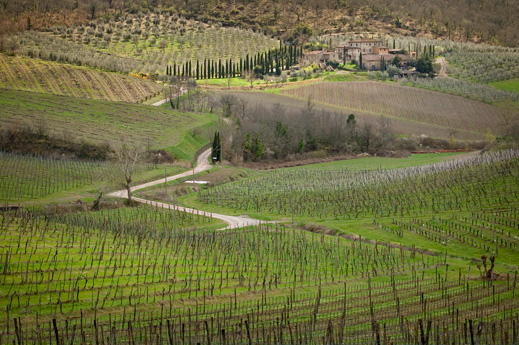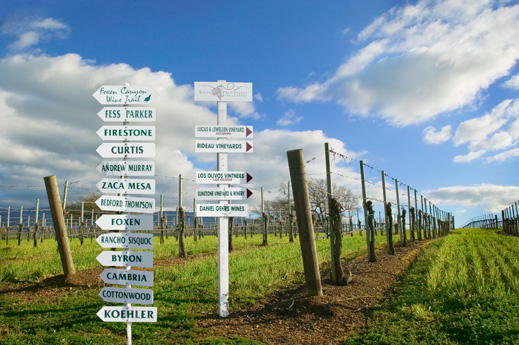
The house was nondescript. It stood squashed between its neighbors on a narrow street in a small, unpretentious village in a very remote part of the French countryside. I wondered why we were stopping here but was assured by our host, and my father, that this was a requisite stop of the utmost importance.
We were ushered into the salon – a slightly stale room at the front of the house. The owner’s wife stood by during the introductions but was dismissed by her husband with a wave of his hand which I thought rude. As soon as she was gone he suddenly got down on his knees and rolled back the worn carpet that covered most of the wooden floorboards. He reached for a latch in the floor and opened up a huge trap door. “I’ll be right back” he muttered and disappeared down an ancient ladder into the bowels of the house. Minutes passed. We heard the odd thud. He reappeared with cobwebs attached to his beret (yes he was wearing one) cradling a very dusty bottle which he reverently placed on a sideboard. He closed the trap door, rolled back the carpet, and summoned his wife to bring the glasses only to dismiss her once again.
Looks of anticipation were exchanged by the three men. The bottle was opened with great care, held up to the light and then poured into the waiting glasses. It looked like liquid gold. Its hue was the color of rich honey. It shone in the filtered sunlight. The man raised his glass and made a toast. My father tasted the wine and smiled knowingly. He looked at me and said, “Taste this – a sip – you’ll remember this for the rest of your life”. I took the glass and sipped the wine. This extraordinary, rich liquid startled me, as though it was filled with roasted fruit and flowers. It was a very rare sauternes. I was nine years old.
The owner’s wife bought in a fine duck liver pâté which was served on plain toast as an accompaniment to the wine. The combination of the two was the perfect. Suddenly all the conversations I had heard about food and wine made sense. When paired together well they were wonderful.
I realize now that wine played a central part in many of the dishes and desserts we grew up with. Coq au vin, Boeuf Bourguignon, Boeuf en Daube, French Onion soup, Baba au Rhum, Bananes Flambé and Crepe Suzette to name a few. A few years into my cooking in earnest I started using wine to deglaze pans in which roasts had been cooked as I had seen my mother and grandmother do. This was a simple way to get a good sauce out of all those tasty brown bits that were in the bottom of the pan. I learned (the hard way) that using the right amount of wine and letting it cook out the alcohol were crucial to having a good sauce. Too much wine and it drowned the flavors and not cooking it enough left an unpleasant taste and bitterness in the dish. After drowning a few fish and overpowering a couple of roasted chickens I finally got the hang of it and picked up some useful tips about cooking with wine along the way.
One of the most important was not to use cheap wine (aka a wine you wouldn’t think of drinking) in a sauce or dish. It will taste like cheap wine. That being said, nor do you need some ruinously expensive wine to make your dish successful. Cooking with wine enhances and compliments the food it’s cooked with whether you’re using it in a marinade (the acidic nature of wine and the tannins will tenderize tough cuts of meat), as part of a cooking liquid (as the wine evaporates its flavor will be concentrated and compliment the ingredients) or to flavor a finished dish (often a dessert that is set alight or has a fortified wine that soaks into it such as a Baba au Rhum).
The alcohol in the wine is not what imparts flavor, rather that it helps release flavors in the food you’re cooking (extracts such as vanilla and almond use alcohol for that very reason). Because of this using the right wine for the right dish is important. White meats such as poultry and fish are enhanced by lighter reds or white wines, red meats are complemented by more robust red wines. Vegetables are wonderful braised with white wine such as a sauvignon blanc and mushrooms can be magnificent served with a reduction made from port or a fruity red. Pears, citrus fruit and vanilla pair well with dessert wines and reds compliment berries, oranges and chocolate.
Cooking with wine is not a new phenomenon. Ancient Roman texts are filled with recipes that used wines to enhance their dishes. Reductions and braises abounded in Medieval kitchens and fortified or spiced wines have even been used as rations for troops in multiple wars. The key in all the dishes is using a judicious hand to extract the wines essence.
Last spring I came across a particularly fragrant crop of apricots at the farmers market and got slightly carried away. After making an apricot tart, some jam and roasting Cornish hens with them there were still a few left. I had some late harvest Riesling at home and poached the fruit with some spices. I spooned the fruit and accompanying liquid into a small glass bowl. Something about the color looked familiar. As soon as I took the first bite I was transported back to that village in France. The apricots had an echo of that sauternes. I savored every morsel with a film running through my mind of all the dishes created with this wine that I had been fortunate to taste over the years. My father was right – I had never forgotten that wine.
Other useful tips for cooking with wine:

SPRING SALAD WITH GOAT CHEESE CROSTINI AND A RED WINE – BALSAMIC VINAIGRETTE
Serves 8 people
For the vinaigrette:
1/3 cup red wine (such as a merlot or zinfandel)
1/3 balsamic vinegar
2 tablespoons golden raisins
3 tablespoon olive oil
Pinch salt
Pepper
For the salad and crostini:
6 oz mixed salad greens – try to add some leaves that are a little peppery (such as arugula, dandelion or watercress)
16 small thin slices baguette or olive bread – toasted
Goat cheese
Golden raisins (from the recipe above)
Red wine-balsamic vinegar reduction (from the recipe above)
‘POACHED’ ROASTED WHITE FISH WITH MEYER LEMONS AND WHITE WINE
Serves 6-8 people
Olive oil
3 shallots – peeled and diced
4 green onions – very thinly sliced
2 cups white wine (such as a sauvignon blanc)
2 tablespoons chives – finely chopped
1 tablespoon dill – finely chopped
1 tablespoon butter
Pinch salt
Black pepper
Juice of 1 lemon
2 lbs white fish (halibut or sea bass work well) – the filets cut into ¼”-thick slices – you are creating petals of fish
3 Meyer lemons – very thinly sliced
POACHED APRICOTS IN LATE HARVEST RIESLING
Serves 8 people
2 tablespoons butter
1 tablespoon light brown sugar
3 cardamom pods – slightly crushed
Zest of 1 lemon
16-24 apricots – halved (if they are large then use 2 per person)
2 cups late harvest Riesling (or other dessert wine)
1 tablespoon honey